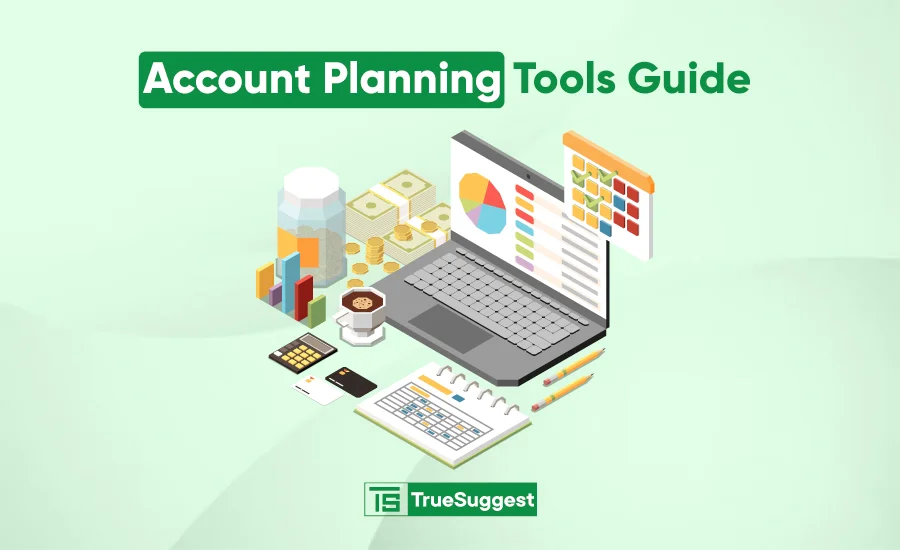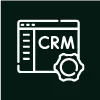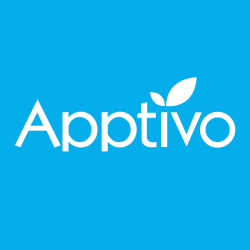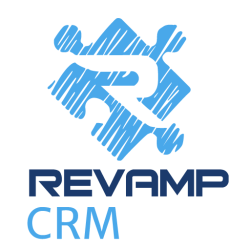How Do I Create an Action Plan Using Account Planning Tools?

An account planning tool is a software application or platform. It helps business owners manage, plan, and optimize their client relationships. These tools are handy in sales, marketing, and customer relationship management (CRM). The major goals of account planning tools are to increase customer satisfaction, revenue growth, and long-term business relationships. However, different types of tools are available on the market. So, choose the best account planning software for your business and perform better.
Account planning is mapping out a document where a comprehensive strategy will be included from the beginning to the ending stage. This mapping process is done by account mapping software or a tool which is called the account planning tool. A planning tool is a software or app that helps to set up a business, manage sales, manage employees, and monitor business efficiency.
Indeed, the account planning software is a business planning tool. It helps some organizations that work for business-to-business (B2B) sales and different kinds of business projects as well. This tool enhances business growth, and finds business pitfalls, weakness, and customer retention as well. So, it’s very necessary to grow and manage a business successfully.
There are different types of planning tools in the online platform. Which tool can be the best for your business, depends on your business requirements. In that case, you should know first about your requirements and then find the tool that can significantly meet your requirements. However, let’s see six major account planning tools that can meet your business goal.
Gantt Chart
Gantt chart is a project management tool that can be used for managing a project. It is used in over 2 million projects around the world. Indeed, the Gantt chart has two main parts: project task and project timeline. What is the main purpose of a Gantt chart project management software?
Project managers use the Gantt chart to make project plans, project schedules, project demos, project costs, team management, and track plant or project progress. Nowadays it has been indispensable in managing different types of projects. So, take at the importance of why it is most necessary for managing a project.
- Visual project timeline.
- Task dependencies.
- Resource management.
- Progress tracking.
- Improved communication.
- Better time management.
- Clear milestones.
PERT Chart
PERT means program evaluation and review technique. PERT chart is one of the best account planning tools. It is used for project scheduling, project mapping, project organizing, and project tracking tools. This tool provides accurate visual project data and project owners don’t need to take other actions to view such crucial data.
PERT chart provides a graphical view of a project. That is helpful for the project manager or project owners to get an overview of their running project. It is similar to the Gantt chart. However, it has numerous features that can positively impact management projects. However, let’s see some benefits of this project management tool.
- Visual representation.
- Improved planning.
- Time management.
- Resource allocation.
- Risk management.
- Performance tracking.
- Enhanced communication.
- Decision-making support.
Critical Path Method (CPM) or (CPA)
Critical path method (CPM) or critical path analysis (CPA) is an algorithm for scheduling a project. This is an old CPM technique developed in 1950. Nowadays this CPM strategy has been used from first to the end of a project. This system can be used for construction, software development, product development, aerospace and defense, engineering, research-based projects, plant maintenance, and others.
A project may have a different path. It helps to locate the project data, project scheduling, analytics, cost management, and project flow. However, in the beginning it will be difficult to understand, because it is algorithm-based. However, its project management strategy made itself more popular. However, let’s see some essential benefits.
- Effective scheduling.
- It allows the manager to identify a business weakness.
- It gives the assumption of how much effort a business owner needs to provide.
- CPM is more efficient for distributing human resources.
- It is the best for budget and cost control management.
SWOT Analysis
SWOT stands for Strengths Weaknesses Opportunities and Threats analysis. It is another world-renowned tool for project management. In most cases, project managers use this tool to manage their different types of projects. SWOT is also called situational analysis.
This tool can be used for project decision-making, progress, revenue growth, etc. It is mainly used for analysis purposes. This analysis process is used to find a project's strengths, weaknesses, opportunities, and threats to your business. However, it has comprehensive benefits for handling a project.
- SWOT is straightforward for the box framework.
- This tool helps to understand a business's weaknesses, strengths, and growth.
- It helps to find threats and external opportunities that a user faces.
- People can easily understand a competitor's position.
- This tool provides all the business data for the users to see at a glance.
Work Breakdown Structure (WBS)
Work breakdown structure (WBS) is a project management tool. It can be used for managing any kind of project or business. It can break down a project into smaller and more manageable components. This tool organizes the basic level of work into higher levels. Starting with the broad project goals at the top and progressively breaking them down into work packages at the lowest level.
Each level of the WBS provides a greater level of detail. It measures that all aspects of the project are accounted for and managed effectively. By visualizing the project teams can better understand the scope, assign responsibilities, estimate costs, and track progress. However, there are numerous benefits to using this tool such as
- It can control unwanted workflow.
- Enhanced scope clarity
- It offers accurate cost estimation
- Improve risk management
- Easy business progress tracking system.
- Better communication facility with customers and team members.
- Advanced supports project planning.
Kanban Board
Kanban is another account planning system. It can be used for managing a project at an organizational level. The Kanban board is a visual and shows the work process in different stages like work items, columns, etc. This board has three main elements such as visual signals, columns, and work-in-process limit.
These boards show the visual data (workflow, efficiency, or progress, work limit) individually that can be seen on the board. Alright, everything is fine, but why should you choose Kanban board? It gives you visual data that you can see your project activity, weakness, strength, and efficiency, at a glance. That’s why, if you would like to get all the data together then Kanban board can be the best choice. However, let’s see some comprehensive benefits of using this business tool.
- It improves working efficiency.
- A user can see project or business report visibility by account planning template.
- This tool shows the strategy to increase productivity and
- Improve team focus and enhance team collaboration.
- It helps to reduce waste management by giving the actual idea.
- Business progress tracking system.
Account planning software in sales provides several key benefits. It can improve the effectiveness of sales teams. One of the primary advantages is the ability to organize customer information. It assists the users in viewing each account.
This dynamic approach encourages sales professionals to develop more strategies and identify opportunities for more sales. However, let’s see some benefits of the planning tool. It can be the best effort for an account planning software.
- This tool offers easy data integration systems for business, employees, and customers.
- Segment your accounts based on criteria such as industry, and revenue potential efforts.
- Using this tool. You can define clear and measurable business intentions for each account.
- Develop customized strategies for each segment, focusing on how to address customer needs and new opportunities.
- Regularly monitor the performance of each account plan, making adjustments as needed based on current data and feedback.
To create a sales account plan, you need to follow a few crucial steps. This strategic process helps you effectively manage and grow relationships with key clients. So, let's provide an essential guide with a few simple steps to creating an account plan.
1. Understand the Client’s Business
Start by thoroughly researching the client’s business, industry, market position, and competitors. Understand their business model, products or services, and current challenges. Determine the client’s short-term and long-term goals. What are they trying to achieve, and how can your product or service help them reach these objectives?
2. Identify Key Stakeholders
Identify the decision-makers, influencers, and gatekeepers within the client’s organization. Understand their roles, responsibilities, and their influence on the buying process. Develop relationships with these stakeholders by understanding their priorities and how your solutions can address their specific needs.
3. Analyze the Client’s Needs and Challenges
Conduct a thorough needs assessment to identify the client’s pain points, challenges, and opportunities. Determine how your offerings align with their needs. This process involves customizing your solutions to better fit of the clients specific requirements.
4. Set Objectives for the Account
Establish specific, measurable, achievable, relevant, and time-bound (SMART) objectives for the account. These could include revenue targets, customer satisfaction scores, and services. Focus on the most critical things that will deliver the highest value to both the client and your organization.
5. Develop a Strategy
You should create a smart strategy that outlines how you will achieve the set goal. It includes a mix of sales tactics, marketing initiatives, and customer engagement activities. Break down the strategy into actionable steps, by assigning responsibilities and timelines to each task.
6. Monitor and Review Progress
Regularly monitor the progress against the account plan. Use key performance indicators (KPIs) to measure success and identify areas for improvement. Be prepared to adjust your strategy based on performance, client feedback, and business growth.
7. Foster Long-Term Relationships
Maintain ongoing communication with the client to ensure satisfaction and to stay informed about any changes in their needs. Always focus to add value to the client’s business by the new products, services. So, focus on a strategy on how to build a long term relationship with the customers.
It is noted that by following these steps, you can create a smart and advanced account plan. That can significantly help you to build strong client relationships, meet their needs effectively, and business growth.
Bitrix24 and HubSpot CRM are completely free. This is a type of business management tool or sales planning tool and has lots of features in this tool. In that case, most software providers offer charges for it according to their business policy.
Some companies offer a specific date to use it for free like 7 days, 15 days, 30 days. After that users need to pay a charge to continue with them and get premium features. However, the most popular tools are Trello, Asana, ClickUp, and Zoho CRM. They are not completely free but allow a user to use their system for a particular duration.
The account plan should be based on some essential elements. Planning is a key for a business or project. In that sales planning tools are required. There are many elements of an account plan but five elements are common for almost all account planning.
- Project issues.
- Planning impact (positive/negative).
- Appropriate solution.
- People management.
- Making a smart plan.
An action account plan is a strategic document. This plan is used for businesses to make specific outlines and activities to achieve a business goal which is called an account planner. It contains some essential steps like timelines, key actions, responsibilities, and others. The action plan helps to ensure that all team members are aligned and working by focusing common goals to increase customer satisfaction, retention, and business growth.
Indeed, the account planning tool is mainly used for business planning, managing, and making a roadmap for reaching the future and building better customer relations and retention. This tool can be used for different types of business models. So, find the best business planning tool or software and make a better roadmap and reach to meet your business goal






























